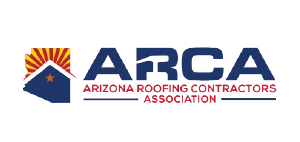Did you know flat roofs are safer to work on than pitched roofs? This is because they have slight slopes. Despite this, flat roofs still need regular maintenance and repairs. In the U.S., about 10-20% of buildings have flat roofs, making it important to know how to maintain and repair them.
So, can flat roofs be fixed? Yes, they can. But the way to fix them depends on the damage and the roof’s age. Small issues like cracks or holes can be fixed with roofing cement or special kits. Make sure the area is clean and dry before applying these fixes.
Bigger problems need a different approach. For large leaks, a membrane patch that’s 6 inches bigger than the damage is recommended. Sometimes, you might need to reseal the whole roof, which can take a couple of days. Older roofs might need up to 2 coats of sealant to protect against leaks and sun damage.
Keeping your flat roof in good shape is key. Check the edges for peeling and fix small problems right away. About 20% of leaks start at the edges. Using fiberglass mesh for repairs can make the fix last longer, up to 50%. These steps help save money and prevent bigger problems later.
Key Takeaways
- Flat roofs are 10-15% safer to work on compared to pitched roofs due to their slight slopes.
- Flat roof maintenance and timely repairs can significantly extend the roof’s lifespan, potentially by up to 50%.
- Using fiberglass mesh for repairs improves the durability and longevity of the seal by up to 50%.
- Regular inspections can prevent approximately 25% of flat roof failures.
- Reflective roof coatings can reduce cooling costs by approximately 10-15% in urban areas due to decreased heat absorption.
Understanding the Basics of Flat Roof Repair
Fixing flat roofs starts with finding where and how bad the damage is. You might see leaks, water pooling, cracks, or the roof membrane peeling off. To spot these problems, you need to inspect the roof closely. This can include looking with your eyes, testing with water, or using special tools like infrared imaging.
Leaks on flat roofs are a big problem, especially as they get older. These leaks can start showing up around 12 to 15 years after the roof is put in. Once you find the source of the leak, you can choose the right fix. This depends on the damage and what the roof is made of.
- Sealing leaks: A common first step is to seal the leaks. The cost can vary but usually falls between $150 to $1,000.
- Replacing damaged sections: If the damage is worse, you might need to replace parts of the roof.
- Applying new coatings: To fully protect and restore the roof, resurfacing and torching down modified bitumen can cost between $300 to $3,200.
The cost of materials for fixing flat roofs is about $40 to $50 for 10-12 square feet. This works out to about $4-$5 per square foot. Labor costs are also high, often between $50 to $80 an hour. They can make up to 70% of the total cost. For small fixes, you might spend $100 to $500. Bigger jobs can cost $500 to $2,000.
Flat roofs can last up to 25 years if they’re installed and cared for right. It’s a good idea to check the roof every year. This way, you can catch small problems before they get big. This makes fixing and maintaining the roof easier and cheaper.
Can Flat Roofs Be Repaired?
Yes, flat roofs can be fixed efficiently. The repair’s success depends on the roof’s condition and the problem it has. Flat roofs are popular in both commercial and residential buildings because they are affordable and useful.
Common problems with flat roofs include water pooling and leaks. These are key issues for roof upkeep. For small damages like punctures or partial peeling, patches or sealants work well. But, bigger damage or older roofs might need more serious fixes, like replacing big parts or the whole roof.
It’s wise to get a pro to fix old or leaking flat roofs. They check for cracks, blisters, tears, and water pooling. Pooling water can cause leaks and damage, so fixing drainage is crucial.
Roofers use different fixes, like patching, adding new layers, or replacing damaged parts. They also suggest protective coatings for older roofs or harsh weather. After fixing, they test the roof with water to make sure it’s working right.
Keeping a flat roof in good shape is key to its long life. Regular checks and quick fixes help a lot. Cleaning the roof and making sure water drains well can prevent damage and keep the roof working well.
Conclusion
Fixing flat roofs is key to keeping a property in good shape. Regular upkeep can make a big difference, preventing damage and saving money. If you ignore repairs, you could face big costs for water damage and structural issues.
Ignoring your roof can also make your energy bills go up. This is because a damaged roof doesn’t keep your home warm or cool well. So, it’s important to keep up with maintenance to avoid these problems.
Fixing small issues early can save you a lot of money. A well-maintained flat roof can last 20 to 30 years. But, if you fix it on time, it can last even longer, saving you from expensive replacements.
Replacing a roof can cost a lot, from $5,000 to $15,000 or more. But, fixing it when needed is much cheaper. This way, you can keep your roof in good shape for years without breaking the bank.
When your roof needs repairs often, it might be time for a new one. Getting advice from roofing experts can help you decide what’s best. With the right materials, like TPO and EPDM, you can make your roof last longer and save on energy bills.
In short, taking care of your flat roof is good for your home and your wallet. It keeps your property safe and valuable for years to come.















